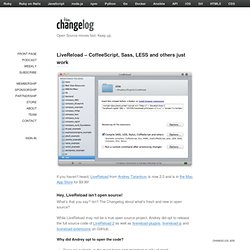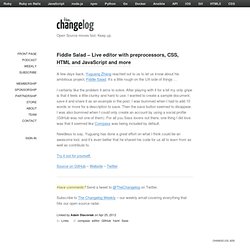

Wireframing, mockups and prototyping for websites and applications. With iPlotz you can create clickable, navigable wireframes to create the experience of a real website or software application.

You can also invite others to comment on the designs, and once ready, you can then manage the tasks for developers and designers to build the project. Works on windows, mac or linux with flash enabled browsers. Add, delete, rename multiple pages for your sitemap.Drag and drop components onto a resizeable page, link them or add hotspot links to other pages or external web pages.Upload, drag and drop your own images onto a page.Export pages as png, jpg or pdf.
Invite others to comment on pages.Share editing rights with others on projects, so that they can modify wireframes too. HTML5 preview. Products. Video Tutorials - Webflow. Assets/Mental-Notes-sneak-preview.pdf. How to Choose the Best Website Builder. The tools available to designers for creating websites have evolved a lot over the years.

As trends and technologies change rapidly, the plethora of different approaches for designing, publishing, and managing websites can be overwhelming. Of the countless options and tools out there, hosted website builder platforms have started to gain popularity in recent years, as a way to design & publish websites more easily than ever before. Site builders typically require no coding, and give you a range of pre-designed templates or themes to pick from to start out. You can then customize the designs to varying degrees, depending on the tool. Many designers have shied away from website builders in the past, because they’re far too restrictive on design customization, with cookie-cutter templates that don’t allow for much creative liberty. Here are the top 5 considerations designers should weigh when looking for the best website builder to go with.
Pixel-Level Design Control Startup Framework Breezi. Fresh Resources for Designers and Developers – June 2013. Time flies quicker when you are working online, and what do you know, we are midway through 2013, and as usual every month, we share our fresh resource pile with you.

Let’s take a look at what’s in store, shall we? This month’s roundup includes tool to help remove backgrounds in photographs from your browser, generate your own icon fonts (and name them too), and save retina-optimized layers of your images for that perfect look. All these and more in this round up for June 2013. For more Fresh Resource, check out our selections for April and May. Recommended Reading: Web Developer Resources: A Mega-Compilation RetinizeIt. LiveReload - CoffeeScript, Sass, LESS and others just work. If you haven’t heard, LiveReload from Andrey Tarantsov is now 2.0 and is in the Mac App Store for $9.99!

Hey, LiveReload isn’t open source! What’s that you say? Isn’t The Changelog about what’s fresh and new in open source? While LiveReload may not be a true open source project, Andrey did opt to release the full source code of LiveReload 2 as well as livereload-plugins, livereload-js and livereload-extensions on GitHub. Why did Andrey opt to open the code? Because curiosity is the most basic and important quality of good developers. Fiddle Salad Language Configuration. Fiddle Salad - Live editor with preprocessors, CSS, HTML and JavaScript and more. A few days back, Yuguang Zhang reached out to us to let us know about his ambitious project, Fiddle Salad.

It’s a little rough on the UX side of things … I certainly like the problem it aims to solve. After playing with it for a bit my only gripe is that it feels a little clunky and hard to use. I wanted to create a sample document, save it and share it as an example in the post. I was bummed when I had to add 10 words or more for a description to save. Needless to say, Yuguang has done a great effort on what I think could be an awesome tool, and it’s even better that he shared his code for us all to learn from as well as contribute to. Try it out for yourself. Design tagged posts. The Toolbox: a directory of the best time-saving apps and tools. CSS 3 Gradient Designer - Dojo AMD Widget. Kuler. Color Scheme Designer 3. Build a Color Scheme: The Fundamentals. Let's dig into the very fundamentals of building a color scheme for your web design: what colors fit to which context, how do combinations work and what color scheme concepts are there?

Building a color scheme is a lot like building a house or building; you need to start with a solid foundation, build your structure and then finish it off with a good coat of paint. There is a ton of tools out there that can help you build your color scheme but all too often designers forget the fundamentals – the basics. Avoid the “hey, that looks good.” mentality and let’s go over some of the basics to building a color scheme. That way you can be confident your color scheme has a solid foundation. Set the Foundation: Selecting a Base Color.